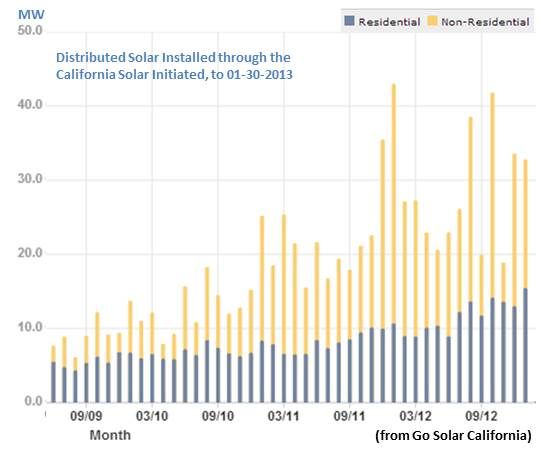Are utilities doing enough to make distributed energy a reality? Or are they foot-dragging?
Those were the questions posed to a panel at the VerdeXchange conference, a California-centric gathering of greentech policy makers, advocates and entrepreneurs, by former Southern California Edison Senior VP James Kelly. “We were responsible for the grid's reliability and we were held accountable if we messed up,” Kelly said, “and we always worried about distributed resources disrupting the grid or endangering customers or utility workers if they weren’t done right.”
“To look at the utilities as opponents of distributed renewables is a gross exaggeration,” answered California ISO Board Member Richard Maullin. “The investor-owned utilities are very realistic about the promises and the difficulties, but that doesn’t mean there aren’t issues with getting further distributed renewables installation.”
The utilities’ and regulators’ concerns are legitimate, he said, and the general public should be equally concerned as California adds more and more distributed renewables.
“The motivation of the ISO is to understand the deeper picture and make projections that are realistic,” Maullin said. “We don’t want to be in a position -- because we didn’t understand what the distributed energy resources were -- that we have congestion on the transmission lines and have a market that is asking for resources that aren’t needed.”
“As we go from very little distributed energy, where it is sort of a novelty, to a situation where it is a very important resource,” Maullin said, these “real-world problems” must be addressed. Distributed energy must have not only political and policy importance but an economic rationale, according to Maullin.
“So long as we have rate structures where the tail blocks are double the initial blocks, there is going to be a lot of incentive for people to install their own power generation. The economics work out,” Maullin said. Therefore, “all the public agencies, the ISO, the PUC, whatever, have to bear down on understanding the characteristics of this resource, where it is, how much it is, and how it behaves, in order to effectively do our traditional job of providing a reliable grid.”

“We are on a trajectory to install thousands of megawatts of distributed resources,” replied Nicholas Chaset, Special Advisor for DG, CHP and Energy Storage to Governor Brown, “but there is a bit of a disconnect in utility planning.”
Besides the energy value those resources have, he explained, there is much value in avoided costs, “like avoided distribution system investments or upgrades. Typically, the investor-owned utilities do not fully account for the expected deployments of distributed resources in their distribution infrastructure planning.”
As a result, Chaset said, “we do some degree of double-paying. We are paying for the rooftop solar and a distribution system that is accounting for expected load growth that might be offset by that rooftop solar.”
A major challenge for utilities, Chaset said, is coming up with a way to better integrate the trajectory of distributed energy resource deployments with their distribution planning -- or regulators must tell them how to do their distribution construction investment planning.
“I agree,” said Maullin. “The fact that we’re having this panel and highlighting these issues indicates that everybody takes it seriously.” But, he added, reacting to all these realities and planning for future investment in the grid has got to take into account effectively the presence of distributed energy.
“The rate design issue is one of the biggest problems with residential rooftop solar,” acknowledged Chaset. “With growing rooftop solar deployments, there are unintended consequences from our block rate system. It was designed before we could conceive of tens of thousands rooftop solar systems. The problem is not distributed solar. It is a rate design that was legislated and not developed through the process we have for commercial rates. That is where the solutions are.”




